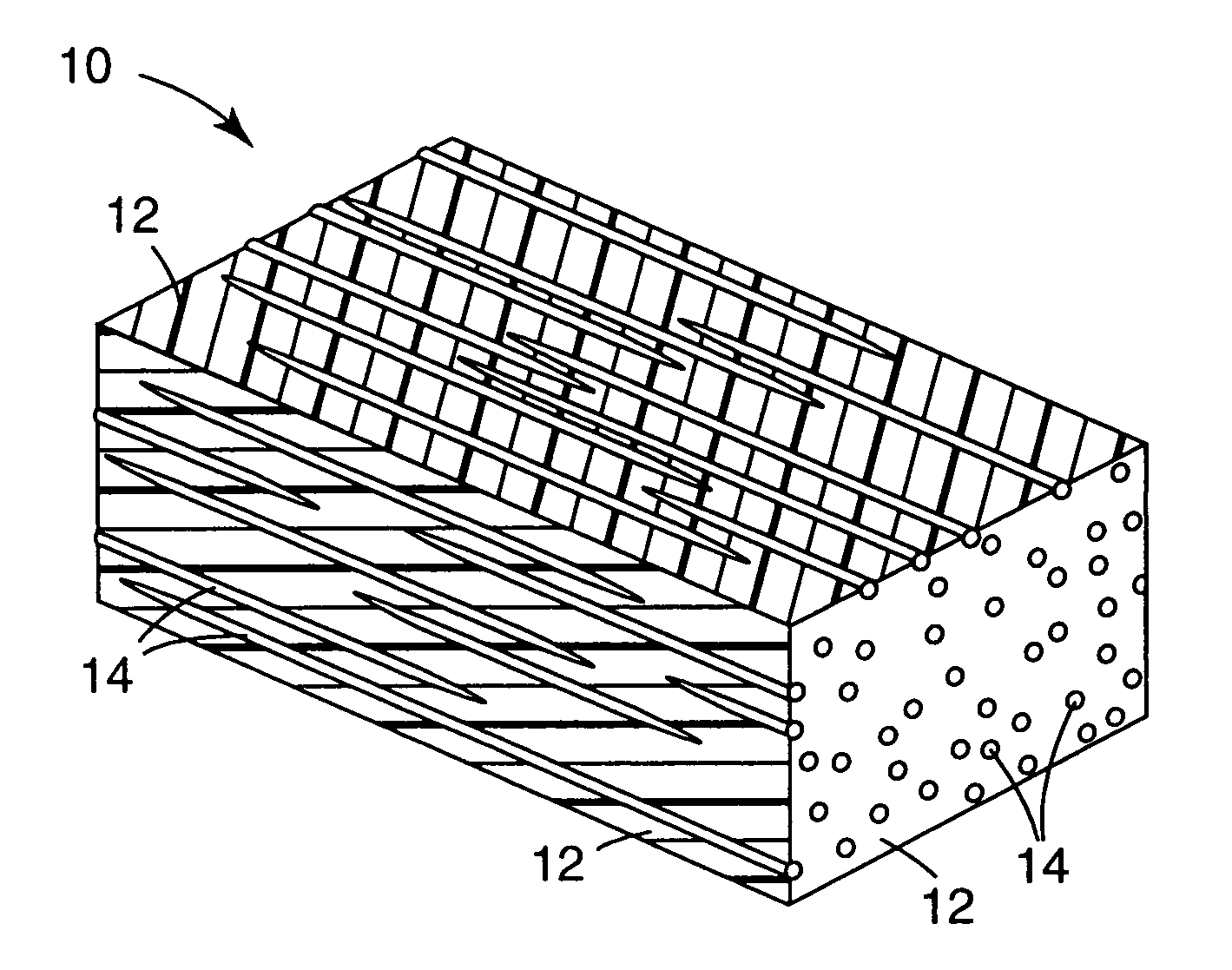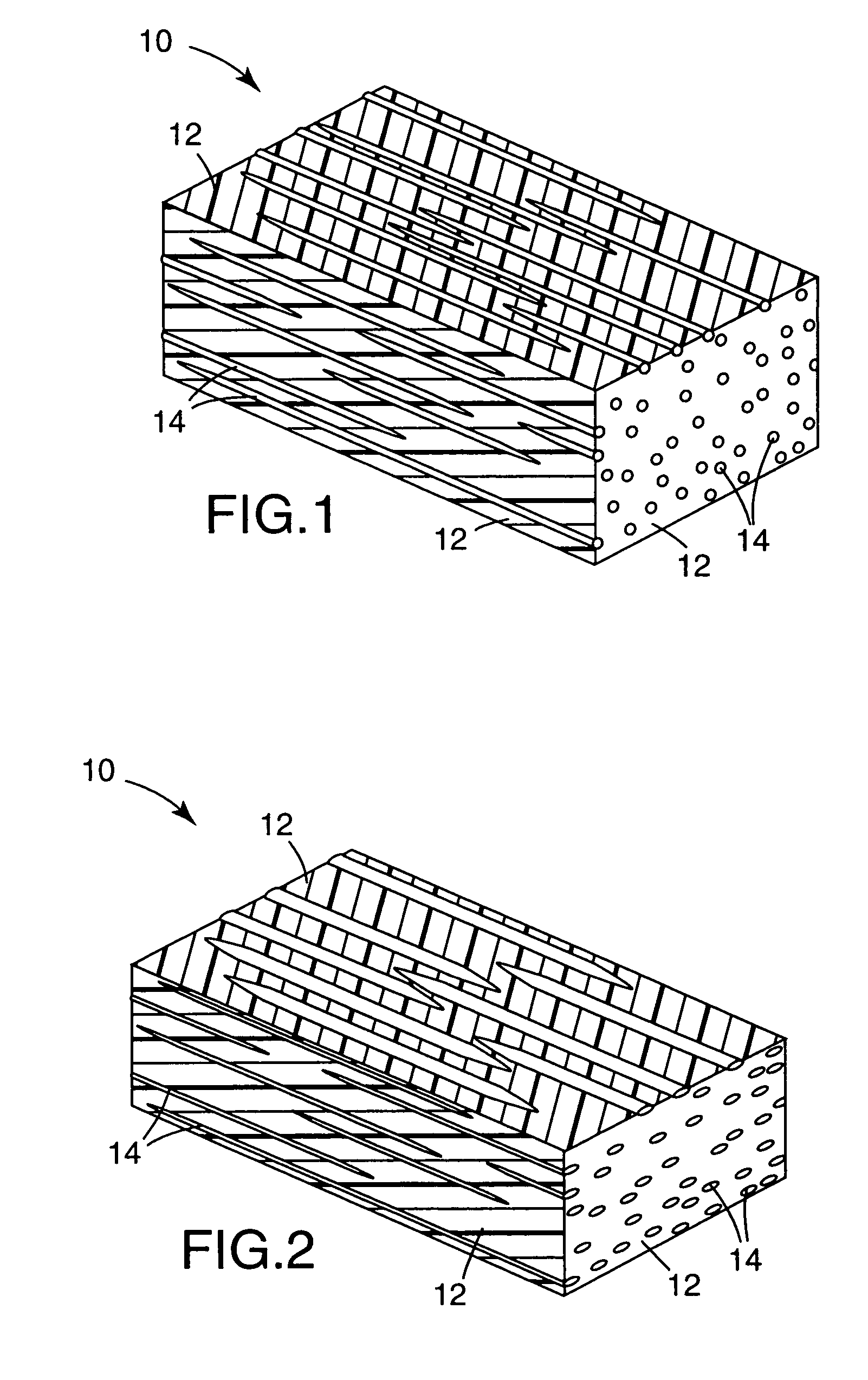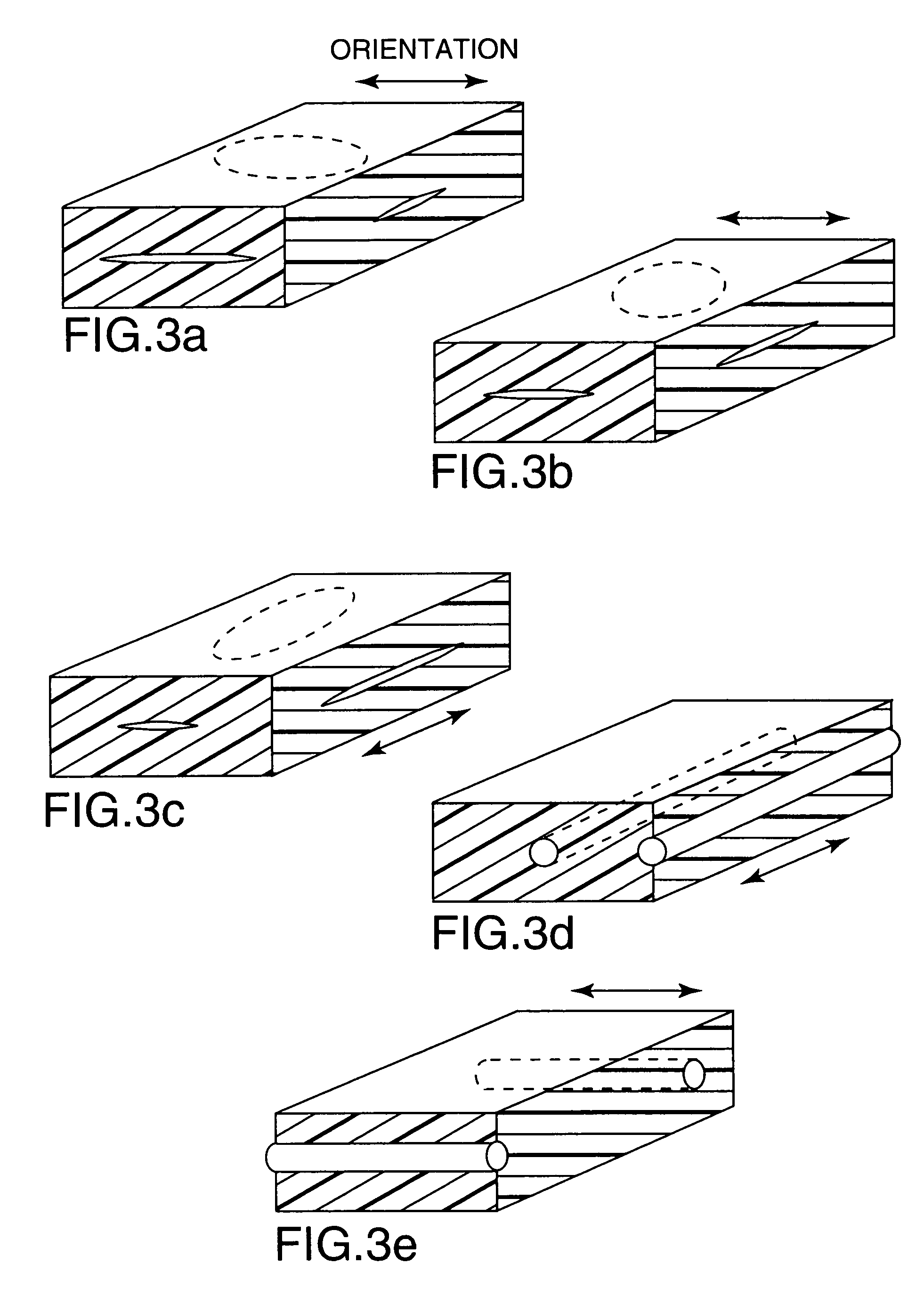Optical film with co-continuous phases
a phase-continuous phase, optical film technology, applied in the field of optical materials, can solve the problem of significant diffuse reflection, achieve the effect of large optical anisotropy, reduce the contribution of scattered light outside of this plane, and reduce scattering strength
- Summary
- Abstract
- Description
- Claims
- Application Information
AI Technical Summary
Benefits of technology
Problems solved by technology
Method used
Image
Examples
example 1
[0134]In Example 1, an optical film was made in accordance with the invention by extruding a blend of 75% polyethylene naphthalate (PEN) as the continuous or major phase and 25% of polymethylmethacrylate (PMMA) as the disperse or minor phase into a cast film or sheet about 380 microns thick using conventional extrusion and casting techniques. The PEN had an intrinsic viscosity (IV) of 0.52 (measured in 60% phenol, 40% dichlorobenzene). The PMMA was obtained from ICI Americas, Inc., Wilmington, Del., under the product designation CP82. The extruder used was a 3.15 cm (1.24″) Brabender with a 1 tube 60 μm Tegra filter. The die was a 30.4 cm (12″) EDI Ultraflex™ 40.
[0135]About 24 hours after the film was extruded, the cast film was oriented in the width or transverse direction (TD) on a polyester film tentering device. The stretching was accomplished at about 9.1 meters per minute (30 ft / min) with an output width of about 140 cm (55 inches) and a stretching temperature of about 160° C....
example 2
[0136]In Example 2, an optical film was made and evaluated in a manner similar to Example 1 except using a blend of 75% PEN, 25% syndiotactic polystyrene (sPS), 0.2% of a polystyrene glycidyl methacrylate compatibilizer, and 0.25% each of Irganox™ 1010 and Ultranox™ 626. The synthesis of polystyrene glycidyl methacrylate is described in Polymer Processes, “Chemical Technology of Plastics, Resins, Rubbers, Adhesives and Fibers”, Vol. 10, Chap. 3, pp. 69–109 (1956)(Ed. by Calvin E. Schildknecht).
[0137]The PEN had an intrinsic viscosity of 0.52 measured in 60% phenol, 40% dichlorobenzene. The sPS was obtained from Dow Chemical Co. and had a weight average molecular weight of about 200,000, designated subsequently as sPS-200-0. The parallel reflectivity on the stretched film sample was determined to be 73.3%, and the crossed reflectivity was determined to be 35%.
example 3
[0138]In Example 3, an optical film was made and evaluated in a manner similar to Example 2 except the compatibilizer level was raised to 0.6%. The resulting parallel reflectivity was determined to be 81% and the crossed reflectivity was determined to be 35.6%.
PUM
| Property | Measurement | Unit |
|---|---|---|
| specular angle | aaaaa | aaaaa |
| vertex angle | aaaaa | aaaaa |
| scattering angle | aaaaa | aaaaa |
Abstract
Description
Claims
Application Information
 Login to View More
Login to View More - R&D
- Intellectual Property
- Life Sciences
- Materials
- Tech Scout
- Unparalleled Data Quality
- Higher Quality Content
- 60% Fewer Hallucinations
Browse by: Latest US Patents, China's latest patents, Technical Efficacy Thesaurus, Application Domain, Technology Topic, Popular Technical Reports.
© 2025 PatSnap. All rights reserved.Legal|Privacy policy|Modern Slavery Act Transparency Statement|Sitemap|About US| Contact US: help@patsnap.com



